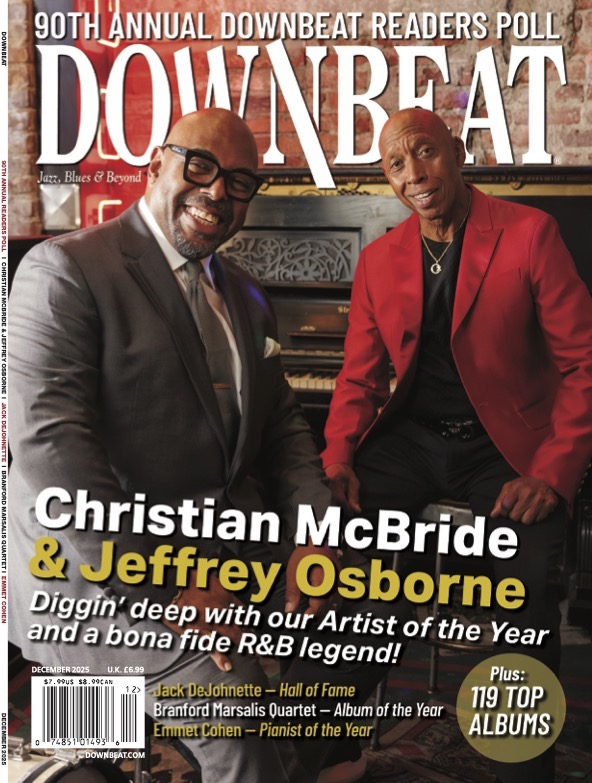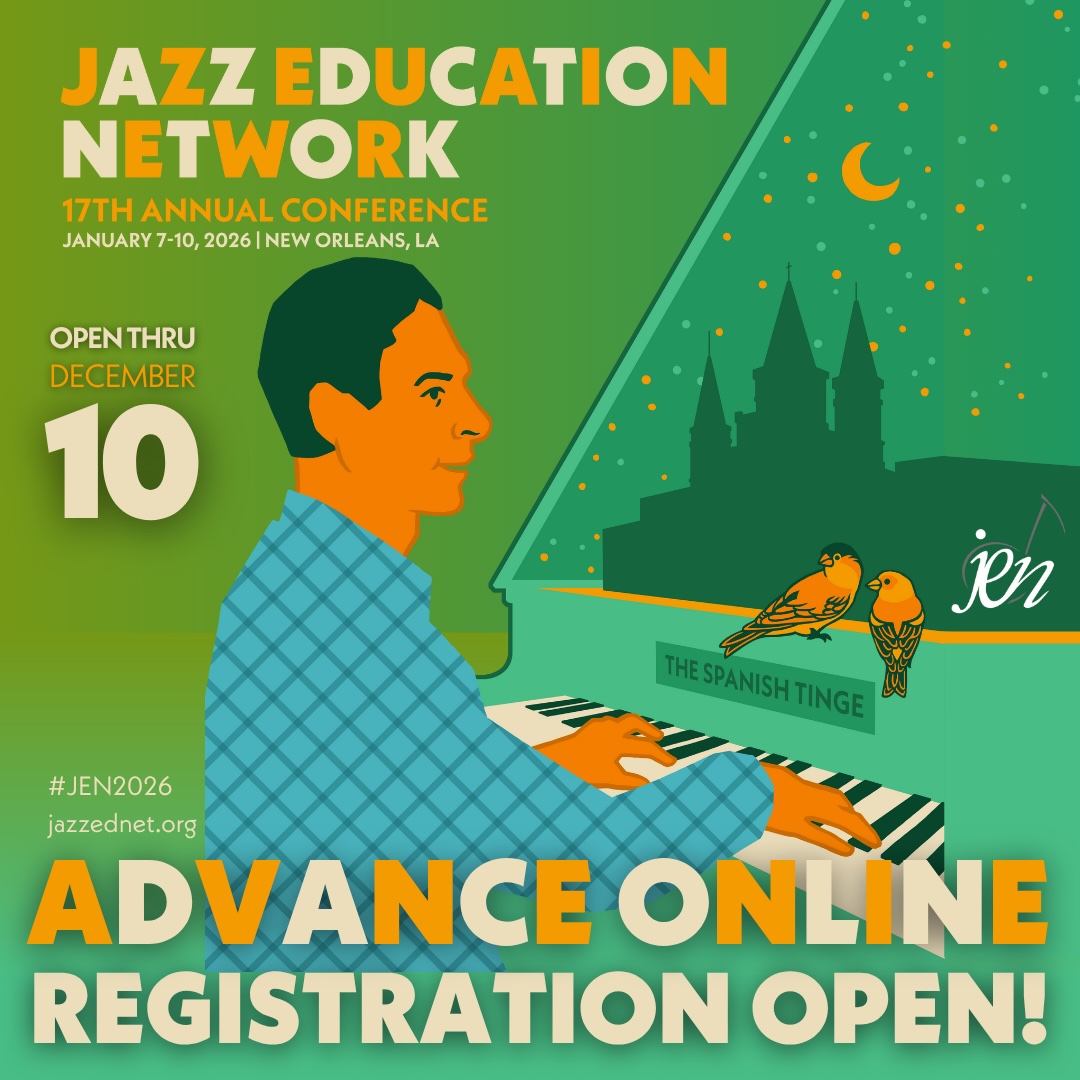Dec 9, 2025 12:28 PM
In Memoriam: Gordon Goodwin, 1954–2025
Gordon Goodwin, an award-winning saxophonist, pianist, bandleader, composer and arranger, died Dec. 8 in Los Angeles.…
Ed Cawthorne, better known as Tenderlonious, is an original character on the UK’s genre-bending jazz scene. Raised in an army family, he took up the saxophone at 23 and the flute three years later. With label 22a, which he co-founded, Cawthorne has created one of London’s most razor-sharp labels. Almost single-handedly, he’s turned the flute into an unlikely emblem for a cross-sectional jazz scene with his bands Ruby Rushton and 22a Arkestra, with the latter releasing its debut album, The Shakedown, earlier this year. While the Arkestra’s line-up is somewhat flexible, the recording counted Cawthorne (flute and synthesizers), Hamish Balfour (keys), Fergus Ireland (bass), Yussef Dayes (drums), and Jeen Bassa, Reginald Omas Mamode IV and Konrad on percussion.
Cawthorne recently spoke to DownBeat about recording against the clock in a world famous studio and exploring his cinematic ambitions.
The following has been edited for length and clarity.
How did you form relationships with the musicians in your 22a Arkestra?
It’s music first; Slum Village is the kind of crew that we all bonded over. They’re a group I got into young, although I got into Busta Rhymes first. When I went to boarding school in ’97, I couldn’t find friends in my own year, but I found friends in sixth form [pre-college years]. They had there a little study room and on their turntable, they were playing Busta Rhymes, “The Disaster Strikes.” I was like, “Wow, this is crazy, what is this?” I went and bought it straight away.
Then there was talk of A Tribe Called Quest, and then De La Soul and then I ended up at Slum Village, ’cause it was all affiliated. The way they rap was almost like a freestyle, improvised; just all the things I love, basically. All the things I love about life, in terms of being put on the spot and having to then deal with the moment in the moment.
Even with my father being in the army—you can plan for something, but when you get into the mix, plans can just be unwritten, because you have to deal with something that you didn’t count on. That’s like combat, and you have to improvise and so, for me, it’s like survival—survival is improvising. You have to work with what you have to be able to survive. When listening to Slum Village—the way they rapped, the beats—everything just felt like that. I find that so appealing, so attractive. So, I guess that was a thing I bonded over with Mo Kolours and Al Dobson Jr.
Is this how your label, 22a, started, connecting over a shared appreciation of artists?
I started 22a after I knew them for about two years. I knew all these guys, and everyone was making really nice music, but it seemed like they were being overlooked.
Mo Kolours was on [the label] One Handed Music, so he had this outlet, but no one else had it. But then I also thought these other guys were just as amazing, two of them were his brothers, and then there was Al Dobson Jr, Henry Wu, James Creole Thomas; they went to Camberwell Arts College. The Mamode brothers. Henry’s quite a bit younger than us, so they met him knocking around, ’cause he grew up literally opposite the college. So, everyone knew each other; it was just about bringing it together. There didn’t seem to be a platform for us.
I was wanting to have control, wanting to know exactly how the music’s going, how it’s being placed in the world, to make sure its not wrongly represented: the right associations, the right talk, the right intentions, integrity. I just wanted to be in control of that.
Let’s talk about recording The Shakedown at Abbey Road; you only had one day to record. Did you feel pressure with improvising an album against the clock?
It was a session that was offered for free; the engineer [from Abbey Road] had seen Ruby Rushton and really liked what he heard. He was getting a bit bored; ’cause you know, Abbey Road is world famous for the Beatles and stuff, but nowadays they make more of their turnover from recording orchestras and choirs for films and stuff. At the time, I was down there, they were doing King Arthur: Legend Of The Sword, and they were recording with renaissance instruments. Obviously, it’s exciting, but a sound engineer might miss recording with new and exciting bands. Matt [Mysko], the engineer, just wanted to do something fresh and new. So, it was really no pressure.
Creatively, is there something unfulfilled that you’re yet to explore?
My whole dream is to write a soundtrack. Growing up, it was all about movies you know; Ghostbusters, Ninja Turtles, Indiana Jones, Star Wars—films that came out in the ’80s, ’90s. You know the theme from Psycho? Busta Rhymes looped that. All those kinds of things that were getting to me, this marriage of music and film. It was exciting and it makes it easier, because you have the visuals with the film and you really understand what the music is saying. So, with me, all the senses are connected, particularly sound and vision. I’ve always dreamed of writing music for film, being given a scenario or scene. I always try to encourage that within my writing anyway.
Did that approach to making music feed into The Shakedown?
When I’m rehearsing with the band and talking about the music, it’s not like I’m saying, “C minor then E flat major 7.” I’m just like, “There’s the chords and you voice them how you want them, and this is the kind of rhythm I’ve got in my head for it.” But if I want the drummer to play the beat kinda lazy, then I’ll describe a scene to him, so he can visualize what I really mean. DB
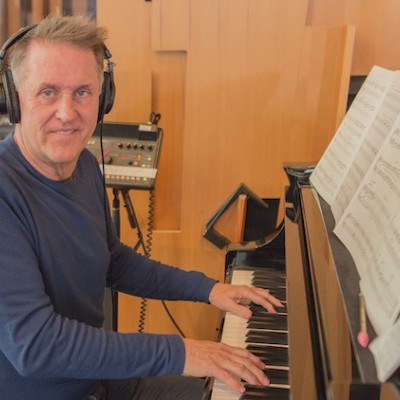
Goodwin was one of the most acclaimed, successful and influential jazz musicians of his generation.
Dec 9, 2025 12:28 PM
Gordon Goodwin, an award-winning saxophonist, pianist, bandleader, composer and arranger, died Dec. 8 in Los Angeles.…

Nov 13, 2025 10:00 AM
For results of DownBeat’s 90th Annual Readers Poll, complete with feature articles from our December 2025 issue,…
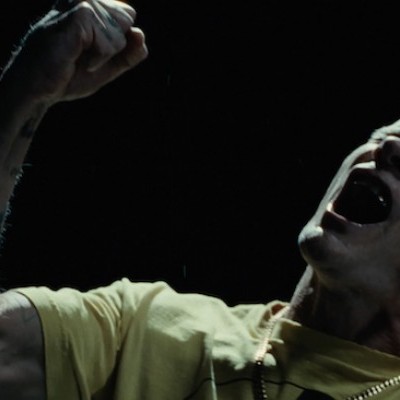
Flea has returned to his first instrument — the trumpet — and assembled a dream band of jazz musicians to record a new album.
Dec 2, 2025 2:01 AM
After a nearly five-decade career as one of his generation’s defining rock bassists, Flea has returned to his first…
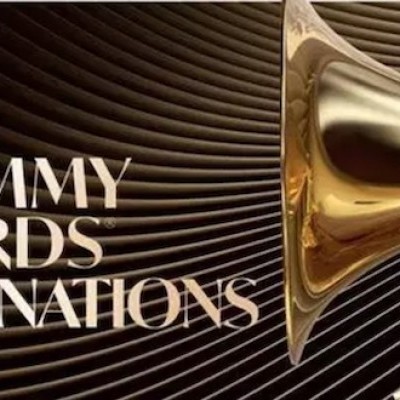
To see the complete list of nominations for the 2026 Grammy Awards, go to grammy.com.
Nov 11, 2025 12:35 PM
The nominations for the 2026 Grammy Awards are in, with plenty to smile about for the worlds of jazz, blues and beyond.…
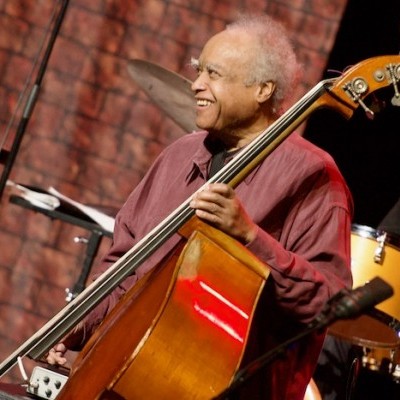
Drummond was cherished by generations of mainstream jazz listeners and bandleaders for his authoritative tonal presence, a defining quality of his style most apparent when he played his instrument unamplified.
Nov 4, 2025 11:39 AM
Ray Drummond, a first-call bassist who appeared on hundreds of albums as a sideman for some of the top names in jazz…

